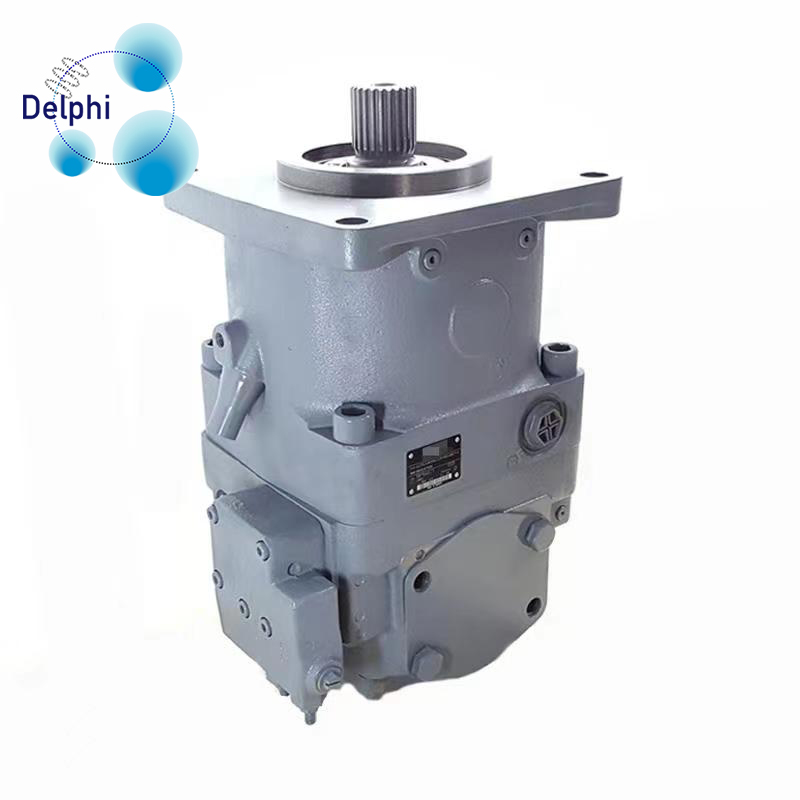Designing a hydraulic pump system for heavy-duty applications requires careful consideration of various factors to ensure optimal performance, reliability, and durability. Some key considerations include:
- System Pressure and Flow Requirements: Analyze the specific pressure and flow requirements of the heavy-duty application to select a hydraulic pump that can deliver the necessary output without being overstressed.
- Component Selection: Choose high-quality hydraulic components, including pumps, valves, hoses, and fittings, designed to withstand heavy loads, high pressures, and harsh operating conditions.
- Pump Type and Size: Select a hydraulic pump type (e.g., gear pump, piston pump) and size that matches the application’s demands, considering factors such as flow rate, pressure capacity, and duty cycle.
- Fluid Compatibility: Ensure compatibility between the hydraulic fluid and pump materials to prevent corrosion, wear, and other damage that can compromise system performance and longevity.
- Sealing and Contamination Control: Implement effective sealing mechanisms to prevent fluid leaks and ingress of contaminants, which can lead to premature wear and failure of pump components.
- Cooling and Heat Dissipation: Incorporate adequate cooling mechanisms, such as heat exchangers or cooling fans, to dissipate heat generated during operation, especially in high-demand applications, china hydraulic pump parts supplier and prevent overheating.
- Mounting and Support Structures: Design robust mounting and support structures to securely hold the hydraulic pump and other system components in place, minimizing vibrations and ensuring stability during heavy-duty operation.
- Maintenance and Serviceability: Consider accessibility and ease of maintenance for routine inspection, lubrication, and repair of hydraulic pump components, facilitating timely servicing and minimizing downtime.
- Safety Features: Integrate safety features, such as pressure relief valves, overload protection, and emergency shut-off systems, to safeguard personnel and equipment from potential hazards during heavy-duty operation.
- Environmental Considerations: Evaluate environmental factors, such as temperature extremes, moisture, and exposure to contaminants, and design the hydraulic pump system to withstand these conditions while maintaining optimal performance.
- Testing and Validation: Conduct thorough testing and validation of the hydraulic pump system under simulated heavy-duty operating conditions to ensure it meets performance, reliability, and durability requirements before deployment.
By addressing these considerations during the design phase, engineers can develop robust hydraulic pump systems tailored to the demands of heavy-duty applications, ensuring long-term reliability and efficiency in operation.
How does a hydraulic pump contribute to the overall efficiency of a hydraulic system?
A hydraulic pump plays a crucial role in the overall efficiency of a hydraulic system in several ways:
- Energy Conversion: Hydraulic pumps convert mechanical energy, typically from an electric motor or an engine, into hydraulic energy. This conversion process is essential for powering hydraulic actuators and performing work within the system.
- Flow Control: Hydraulic pumps regulate the flow rate of hydraulic fluid within the system. By controlling the volume of fluid delivered per unit of time, pumps ensure that the system operates at the desired speed and efficiency.
- Pressure Generation: Hydraulic pumps generate the necessary pressure to overcome resistance within the system and actuate hydraulic cylinders, motors, or other components. china hydraulic motor parts manufacturer Maintaining adequate pressure ensures that the system can perform work effectively.
- System Response Time: The efficiency of a hydraulic pump directly affects the system’s response time. A pump capable of delivering fluid quickly and efficiently enables rapid actuation of hydraulic components, resulting in improved system performance and responsiveness.
- Volumetric Efficiency: The volumetric efficiency of a hydraulic pump refers to its ability to deliver the intended volume of fluid per cycle. High volumetric efficiency minimizes internal leakage and ensures that the pump delivers the expected flow rate, maximizing system efficiency.
- Overall System Efficiency: By providing the necessary fluid flow and pressure, hydraulic pumps contribute to the overall efficiency of the hydraulic system. A well-designed pump matched to the system’s requirements minimizes energy losses, reduces heat generation, and optimizes performance, resulting in improved overall efficiency.
- Energy Conservation: Efficient hydraulic pumps help conserve energy by minimizing power consumption and reducing unnecessary losses. By operating at higher efficiencies, hydraulic pump manufacturers hydraulic systems can achieve better energy utilization and lower operating costs over time.
- Component Longevity: Hydraulic pumps that operate efficiently exert less stress on system components, such as valves, cylinders, and actuators. Reduced mechanical strain and heat generation can extend the lifespan of these components, contributing to overall system reliability and efficiency.
In summary, the hydraulic pump serves as the heart of a hydraulic system, facilitating the conversion, control, and transmission of hydraulic energy. Its efficiency directly impacts the system’s performance, responsiveness, energy consumption, and longevity, making it a critical component for achieving overall efficiency in hydraulic applications.
